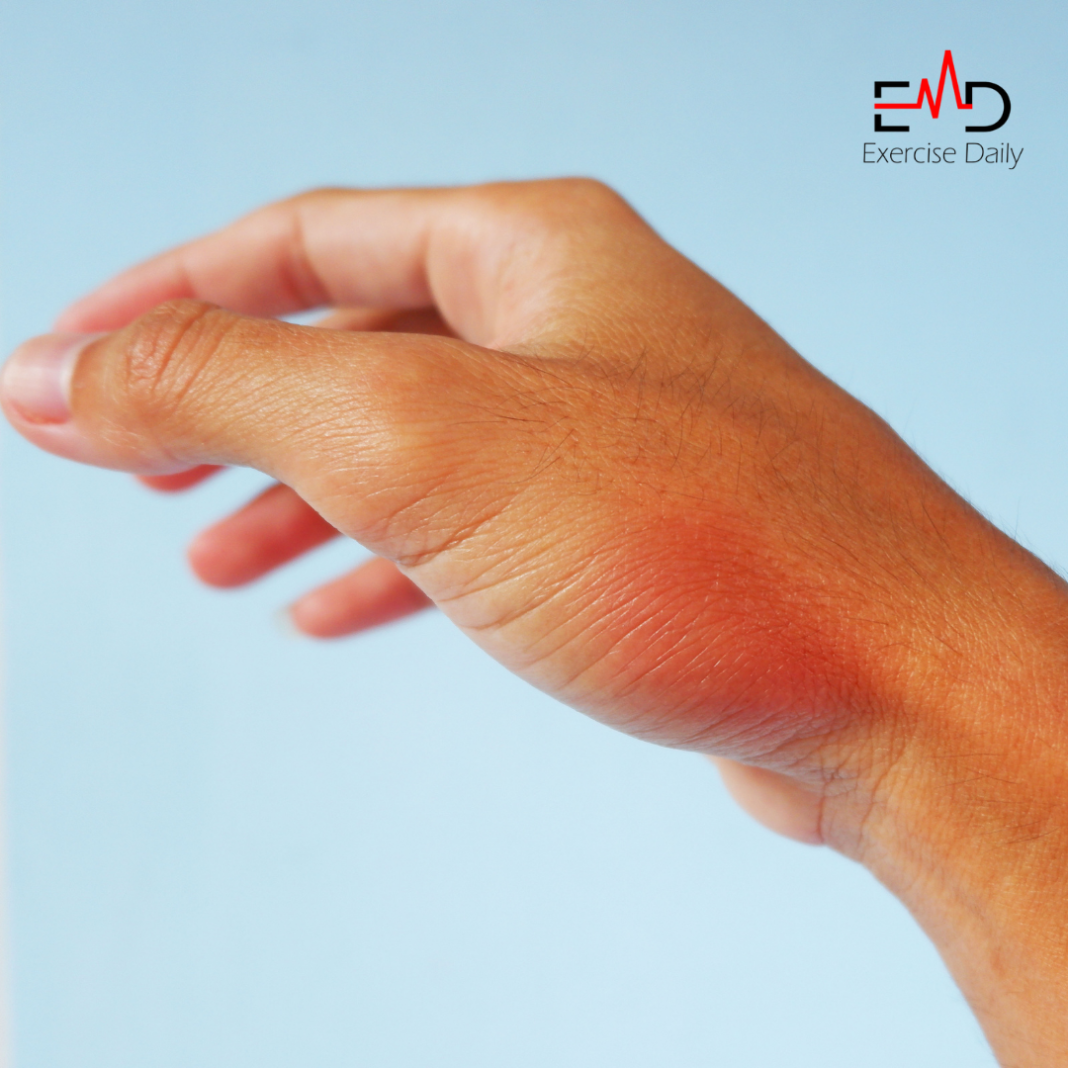Exercise Daily – Cellulitis is a bacterial infection of the deeper layers of the skin. It is typically curable with medicines. It is one of the most frequent skin infections. But can cellulitis kill you?
When left untreated for an extended period of time or when complications are not identified and addressed, it may become life-threatening. Cellulitis is often treated with antibiotics with little difficulty. However, problems may emerge in rare instances.
How Does Cellulitis Develop?
Usually, cellulitis develops when a crack or break in the skin allows bacteria or pathogens to enter into it. It usually affects the dermis, which is the layer of skin underneath the top, the outer layer of skin (epidermis).
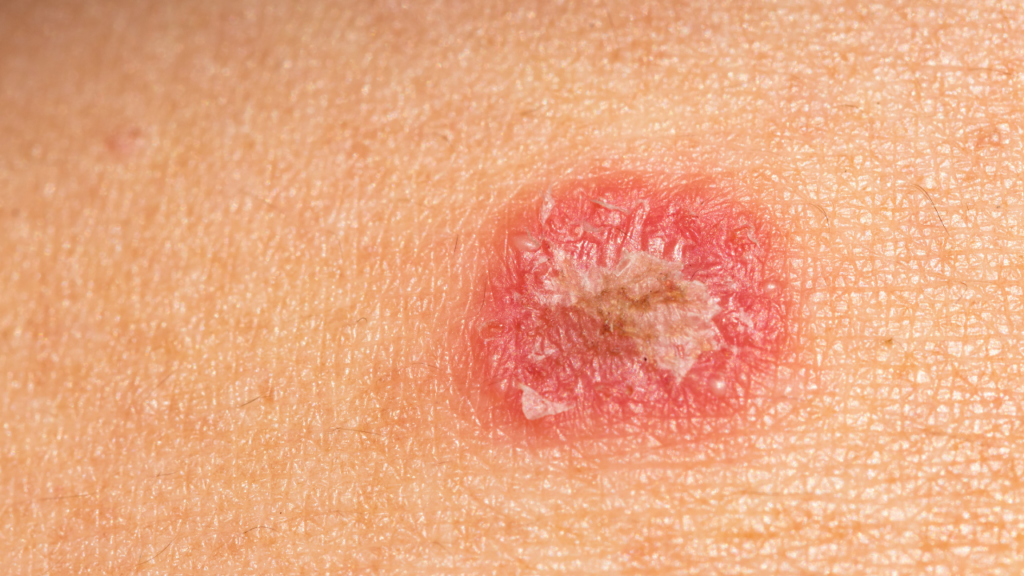
The dermis comprises blood vessels, oil and sweat glands, nerves, hair follicles, and other structures. It also includes subcutaneous connective tissue and other connective tissue components. Cellulitis may extend to the muscle and bone in rare circumstances.
What Are the Signs and Symptoms of Cellulitis?
A cellulitis outbreak manifests as puffy and inflamed skin on the body. It is often unpleasant and warm to the touch. Despite the fact that cellulitis most often affects the lower legs, it may affect any region of the body, including the face.
Additionally, it normally only affects one side of the body at a time. For example, it is very uncommon for cellulitis to infect both legs at the same time.
Moreover, it may affect the region surrounding the eyes (periorbital or preseptal cellulitis) and the area behind the eyes (orbital cellulitis). So, the case isn’t about can cellulitis kill you, but it’s how much it affects you!
Other signs and symptoms of cellulitis include the following:
- A skin sore or rash that arises unexpectedly and progresses rapidly during the first 24 hours after being diagnosed
- The skin has a tight, glossy, strained aspect about it
- Joint stiffness as a result of enlargement of the tissue around an injured joint
- Nausea and vomiting
What is the Treatment for Cellulitis?
In most cases, a prescription oral antibiotic is used as the initial line of defense against cellulitis. Typically, you will get a response within three days after taking your first dose. You should notice that the redness, swelling, and pain are all beginning to subside as time goes on.
It is critical for patients to understand that they must finish the whole course of antibiotic therapy. Ensure the completion of therapy even if you are feeling better! Cellulitis is often treated with antibiotics for 7 to 10 days, after which it will disappear.
What are the Risks and Consequences of Cellulitis?
While cellulitis is normally a straightforward condition to treat, problems might arise in rare instances. These may include the following:
Abscess
A pocket of yellow pus, known as ‘purulent pus,’ may form under the skin. This is when germs accumulate beneath the surface of the skin. The drainage of the abscess might be unpleasant. Although we don’t agree about can cellulitis kill you, it does worsen in certain cases.
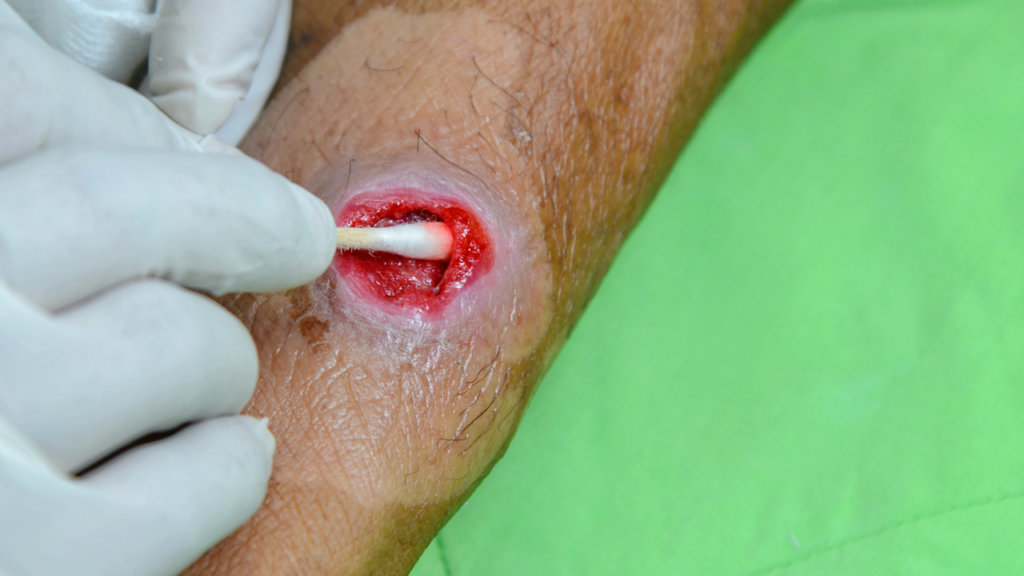
As a result, if cellulitis is worsened by an abscess, the only therapy available is surgery. It often requires an incision and drainage. They cut the skin in order to release the pocket and drain all of the fluid out.
Gangrene
Gangrene is a tissue that has died or is dying, and it occurs when the blood supply to the tissue is cut off. This may occur for a variety of causes, one of which may be an infection. The infected location may become black or blue, ooze pus, ache, or feel numb as a result of the infection.
Gangrene produced by or accompanied by infection is a medical emergency. You should seek medical attention as soon as you see it.
It is possible that you may need surgery to remove dead tissue. Alternatively, you might need to have antibiotics administered intravenously to treat the infection.
Hyperbaric oxygen treatment boosts the quantity of oxygen in your blood and decreases bacteria development. These bacteria only thrive when there is no oxygen present. Hence it can be a treatment option as well.
Surgical amputation may be necessary for the most severe instances of gangrene. If you don’t remove the part, the incidence of can cellulitis kill you may significantly increase.
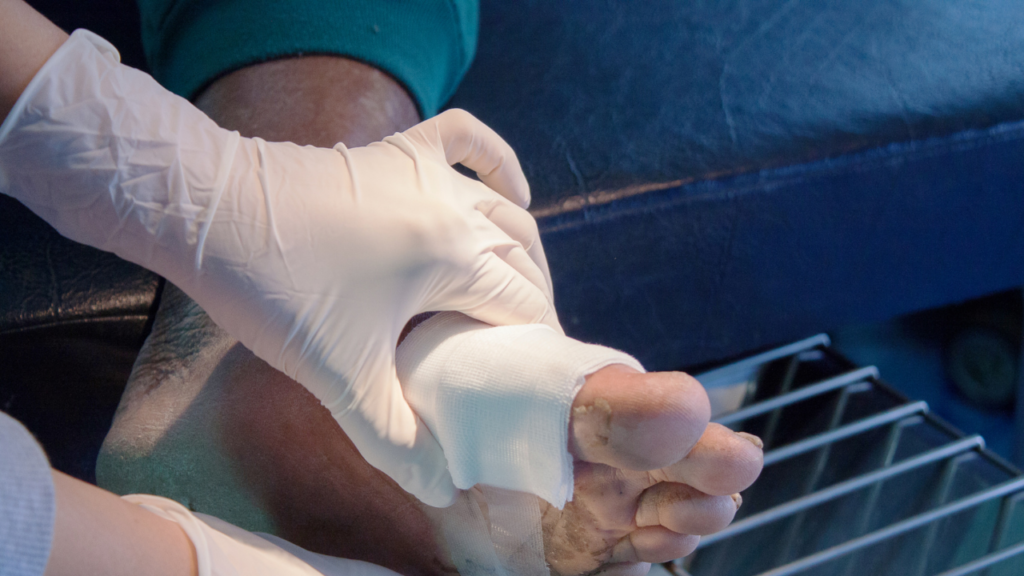
Necrotizing Fasciitis
Sometimes the infection may spread to deeper layers of the tissue and create necrotizing fasciitis. It is a life-threatening condition that requires immediate medical attention.
A bacterial infection of the fascia (connective tissue) and surrounding soft tissue, often known as “flesh-eating disease,” is responsible for the condition’s onset and fast spread.
The infection causes tissue death, which may result in the loss of limbs or even death. An intravenous antibiotic solution is administered in addition to surgical excision of the dead tissue to complete the healing process.
MRSA
Methicillin-resistant Staphylococcus aureus (MRSA) infections are resistant to many of the antibiotics used to treat ordinary staph infections. MRSA infections are becoming more common as a result of the increase in incidents.
MRSA can be a concern in certain cases of cellulitis that involves an abscess or pus. Particularly in cases of cellulitis that involve an abscess or pus, or in cases where there are other risk factors, such as injection drug use.
The bacterium that causes cellulitis would need the administration of antimicrobials that are effective against MRSA. These include trimethoprim sulfamethoxazole and clindamycin or Doxycycline.
Alternatively, if you are admitted to the hospital, vancomycin is the primary antibiotic that doctors use. Hence, MRSA is the reason explaining how can cellulitis kill you! The best bet is to take antibiotics that are effective against it.
Orbital Cellulitis
Orbital cellulitis is a condition that affects the fat and muscle around the eye. It is responsible for impacting the eyelids, brows, and cheeks, among other areas.
It may impair eye movement, causing bulging of the eyes, discomfort, and vision loss. Hence, it is a medical emergency.
Other symptoms include discolored eyelids and fever. If left untreated, septicemia (viruses in the bloodstream) and bacteremia (bacteria in the bloodstream) may develop. Moreover, it may also cause cavernous sinus thrombosis (a blood clot in the cavernous sinus), hearing loss, meningitis, and blindness.
The most frequent cause of orbital cellulitis in children is a sinus infection caused by Haemophilus influenzae. It is a kind of bacterium that may cause a range of illnesses, the majority of which occur in newborns and children.

The less dangerous condition of periorbital (or preseptal) cellulitis should not be confused with the more serious condition of orbital cellulitis. Swelling, redness, and discharge from the eye are all symptoms of this disorder. It affects the skin surrounding the eye and on the eyelids as well.
People with orbital cellulitis need intravenous antibiotics. However, oral antibiotics are good to treat periorbital cellulitis. Surgery may also be required to empty an abscess or to alleviate pressure around the eye in some circumstances to prevent the case of can cellulitis kill you.
Perianal Streptococcal Cellulitis
This kind of cellulitis, which affects the anus and rectum, is most often seen in young children. It is possible that the illness is caused by strep throat, the common cold, or a streptococcal skin infection (impetigo).
Fever, soreness, itching, redness around the anus, and blood in the feces are all symptoms of anus infection.
Mupirocin is a topical antibiotic that may be used topically. Oral medicines such as penicillin are used to treat the infection. Even in the absence of cellulitis, the perianal skin may serve as a reservoir for the strep bacterium.
Septicemia
Cellulitis may penetrate into the body, spread to the bloodstream, and become life-threatening, if not treated properly. But this is quite rare! However, it is important to treat cellulitis as soon as possible.
Infection of the bloodstream, also known as septicemia, may result in sepsis, which is a very inflammatory reaction to infection. Acute sepsis may progress to septic shock, which is characterized by a reduction in blood pressure and the failure of key organs to function.
Treatment for septicemia is often provided in a hospital setting and may involve intravenous antibiotics, blood pressure-raising medicine, other drugs, oxygen, intravenous fluids, renal dialysis, and sometimes the use of a ventilator or other mechanical ventilation device.
Lymphedema
Lymphedema is swelling in an arm or leg as a result of a blockage in the lymphatic system. It may occur as a result of cellulitis as well as as a risk factor for the infection. If you suffer from lymphedema, you may think about can cellulitis kill you.
Repeated cellulitis may cause damage to your lymphatic drainage system, resulting in persistent swelling of the arms, legs, and other organs.
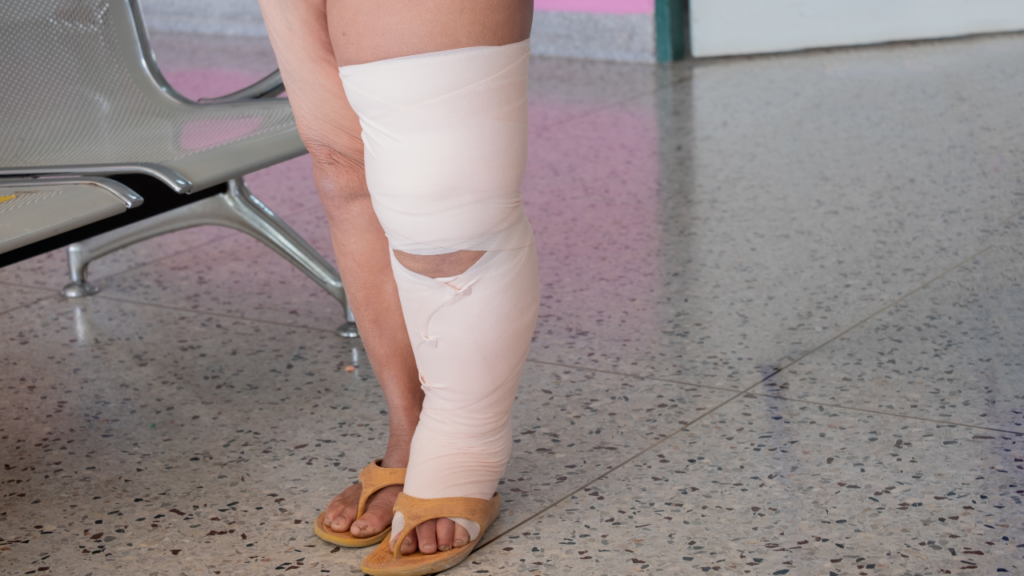
A preventive course of antibiotics may be used to treat recurrent cellulitis in order to break the cycle of infection.
How to Avoid Getting Cellulitis and the Complications that Come With it?
Anything you can do to avoid skin breaks will help to lower your chance of cellulitis and, therefore, the difficulties that might arise from cellulitis.
Take all reasonable precautions to avoid injury
Anyone who has diabetes should take precautions to decrease their risk of skin damage. However, those who have the disease may have a loss of feeling in their limbs. This makes it difficult to detect even minor lesions.
People with diabetes should be especially cautious in inspecting their feet, hands, legs, and arms for abrasions, cuts, broken skin, and other injuries. Check your sugar levels regularly with a reliable kit.
Diabetes may also cause dry, cracked skin, which is especially noticeable on the feet. It is possible that germs may infiltrate your skin and produce cellulitis as a result of this procedure.
People with diabetes make frequent visits to their podiatrist in addition to their primary care physician.
Treat all wounds as soon as possible
Clean minor wounds properly with soap and water, and cover the area with a bandage. Make sure to change it on a regular basis with an antibiotic ointment or as often as your doctor recommends.
So, if it’s a yes to can cellulitis kill you, it’s necessary to take precautionary measures by following these instructions:
Maintain the cleanliness of the bandaged region and the wounded area until it recovers. Consult a doctor if you have a serious wound or if your wound is not healing properly.
Treat any underlying infections or diseases that may have had a role in the development of your cellulitis.
Chronic skin diseases such as eczema, as well as diseases such as cancer and HIV/ AIDS, lymphedema, peripheral vascular disease, and obesity, all increase the likelihood of developing cellulitis.
In the event of recurring cellulitis, which may be particularly dangerous, make certain that your skin is in excellent health.
Maintain a clean and moisturized skin as well as well-trimmed nails
Moisturizing the skin helps to prevent it from breaking, which would otherwise provide a pathway for germs to enter the skin. It is less likely that you will scratch yourself if your nails are short.
How to Treat Cellulitis At Home?
It is practically not possible to treat cellulitis without antibiotics. However, while you are recuperating at home, there are various things you may do to alleviate any pain.
Bandage your wound
Covering the damaged area will aid in the healing process and will assist to avoid inflammation. Keep in mind to change your bandage on a regular basis, and use good quality bandages. Follow your doctor’s recommendations for treating your wound.
Clean the skin around the wound
Follow your doctor’s instructions for cleansing the skin. If you ask your doctor that can cellulitis kill you, he or she might give you a worrisome answer if you don’t keep the wound area clean.
Your doctor might recommend elevating the afflicted region. If you have a problem with your leg, lay down and raise your leg above the level of your heart. This will aid in the reduction of swelling and the alleviation of discomfort.
Use a cold compress to relieve stress
To relieve the itching and burning, wrap a clean washcloth in cold water and apply it directly to the afflicted area. Avoid chemical icepacks since they might irritate the skin even more.
Take OTC pain medication
It is necessary to take over-the-counter pain medication. If you have pain or inflammation, a nonsteroidal anti-inflammatory medication such as ibuprofen (Advil, Motrin) or naproxen (Aleve) will help relieve it.
Treat any underlying issues
Treat any underlying illnesses, such as athlete’s foot or eczema. They may have contributed to the infection of the wound in the first place.
Take all medicines on time
Take all of your antibiotics as prescribed. The symptoms of cellulitis should begin to fade within 48 hours after starting antibiotic therapy. However, it is critical that you continue to take your antibiotics until the completion of therapy.
If you discontinue the therapy, the infection may recur, and the second round of antibiotics may not be as successful as the first course of antibiotics.
Frequently Asked Questions
How long does cellulitis take to kill?
With therapy, a tiny area of cellulitis in a healthy individual may disappear in 5 days or so. The more severe the cellulitis and the more medical issues the individual has, the longer it might take to resolve. Very severe cellulitis may linger for 2 weeks or more.
What are the chances of dying from cellulitis?
There was an overall mortality rate of 1.1% worldwide. For research conducted in the United States, the rate was 0.5%. It was typically difficult to determine the exact cause of death, and only one-third of fatalities looked to have been caused by infection.
What are the symptoms of cellulitis gets into the bloodstream?
- The red area that tends to expand
- Swelling
- Red spots
- Blisters
- Tenderness
- Pain
- Warmth
- Fever
Can cellulitis turn into sepsis?
After, can cellulitis kill you, another concern is can cellulitis turn into sepsis? Well, it can! Antibiotics are typically effective in the treatment of cellulitis, and the majority of patients achieve a complete recovery.
In other cases, however, it may produce potentially significant complications, especially if not treated promptly, such as blood poisoning (sepsis).
What is the fastest way to get rid of cellulitis?
- Covering your wound
- Keeping the area clean
- Elevating the affected area
- Applying a cool compress
- Taking an over-the-counter pain reliever
- Treating any underlying conditions
- Taking all your antibiotics
Take Away
Cellulitis is a dangerous illness and you can’t treat it at home without professional assistance. Within hours, it may progress to the point of becoming a potentially fatal blood infection.
If you suspect you have cellulitis, get treatment at the nearest urgent care facility or emergency department. Early antibiotic therapy is critical in lowering your chances of developing major problems. If you have had cellulitis, share your journey in the comment section below.

